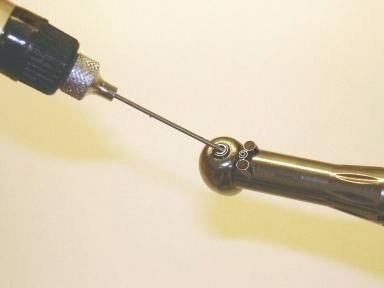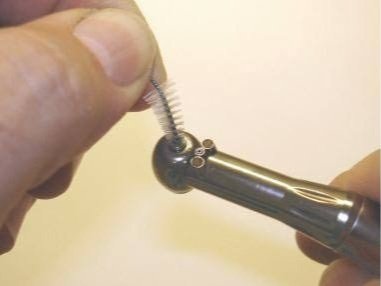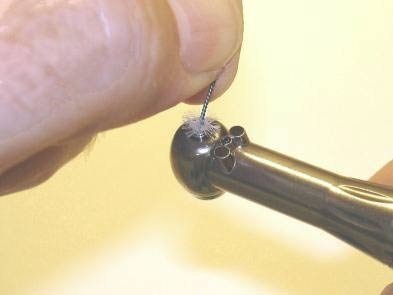operating tips
Keep Your Handpieces Out of Our Hands!
General Handpiece Operating Tips
Your dental handpiece is one of the most critical tools in your operatory—treat it right, and it’ll return the favor with consistent performance, precision, and longevity. Below are essential operating tips every dental team member should follow to protect your investment and ensure safe, efficient care for your patients.
1. Start With the Right Air Pressure
Before using any handpiece, verify that your delivery unit’s air pressure is set according to the manufacturer’s specifications.
Pro Tip: Most high-speed handpieces are designed to operate at no more than 35 PSI.
To get the most accurate reading, measure the pressure at the handpiece tubing connection—not at the control box. Avoid the temptation to crank up the PSI. More pressure doesn’t mean more power; in fact, it can cause turbine damage due to increased back pressure.
2. Always Insert a Bur Before Tightening the Chuck
Never—never—tighten a manual chuck without a bur in place. Doing so may damage the chucking mechanism, potentially leading to costly repairs or replacement.
3. Don’t Run the Handpiece Without a Bur
Running a handpiece without a bur securely installed can harm the chuck and compromise safety. Always check that the bur is fully seated and locked in place before powering on.
4. Keep Your Finger Off the Push Button During Use
Pressing the push-button while the handpiece is running can accidentally open the chuck and cause the bur to eject. This poses a serious risk to both you and the patient. Ensure your grip avoids the chuck area during operation.
5. Don’t Use the Handpiece to Retract Soft Tissue
Using your handpiece to retract cheeks, lips, or tongue can generate dangerous heat—especially if the end cap is depressed while the turbine is spinning. This can lead to thermal injury. Always use proper retractors designed for soft tissue management.
6. Read the Manufacturer’s Instructions First
Every handpiece brand and model is slightly different. Before using any new equipment, take a moment to read the instructions. This ensures you’re using the handpiece correctly and following specific maintenance guidelines that protect your warranty—and your patients.
Final Word: Protect Your Tools, Protect Your Practice
Proper handpiece handling isn’t just about avoiding damage—it’s about ensuring patient safety, improving performance, and reducing long-term costs. These tips may seem simple, but when followed consistently, they can dramatically extend the life of your equipment.
Looking for more tips on handpiece care and maintenance?
Visit our blog for expert insights and practical advice.

Proactive Handpiece Care for Optimal Performance
While we’re always here to support your repair needs, proper maintenance can minimize downtime and extend the life of your equipment. Explore our expert tips for effective lubrication and daily care.
Some handpieces are maintenance free, or Lube Free®, meaning the bearings do not require routine lubrication. However, the push button chuck mechanism is made up of tiny, moving, metal parts that do need cleaning and lubrication to ensure safe performance, and extend the life of the chuck mechanism. According to Star Dental® it is necessary to clean the turbine autochuck once a week.
We recommend the following procedure:
Place a drop of oil on the end of a proxy brush, or in the chuck opening.
Insert the proxy brush into the chuck opening.
Slide the brush in and out several times to loosen and remove any accumulated buildup.
Spray air from your syringe into the chuck to expel any loose material.

1. Place a drop of oil on the end of a proxy brush, or in the chuck opening

2. Insert the proxy brush into the chuck opening

3. Slide the brush in and out several times to loosen and remove any accumulated back-up


